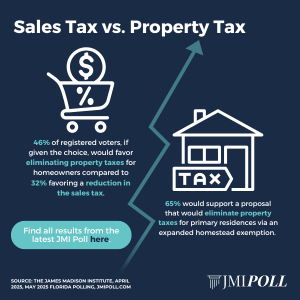On Feb. 15, grid operators across the country shed electric service amid a remarkably potent cold snap. Electricity use exceeded generation in three of the seven organized electricity markets in the United States, including the Southwest Power Pool (SPP), the Midcontinent Independent System Operator (MISO) and the Electric Reliability Council of Texas (ERCOT). Per protocol, these grid operators initiated controlled service interruptions in order to avoid a far more damaging uncontrolled system collapse. The outages eclipsed four million customer accounts in Texas, with other states ranging from Oregon to Louisiana to Virginia having over 100,000 customer accounts without power.
Although the situation is rapidly evolving, immediate recommendations include:
Focus on crisis management now, draw firm conclusions later. Public officials are rightfully more concerned with things like getting residents without heat into emergency shelters, but some are already calling for the need to have a “serious conversation” about electric reliability. A more robust analysis will delineate root causes of the blackouts, but headlines will not wait that long. In this case, it is imperative that immediate takeaways use reliable data, communicate uncertainty accurately and craft narratives from reliability authorities like the ERCOT and North American Electric Reliability Corporation (NERC), not groups motivated to depict certain technologies in a positive or negative light. Recall, many falsehoods were initially issued on Twitter during the California blackouts last year that later contradicted the root cause analysis.
Specific causes of generator outages—not just outages by fuel type—are what matter. Too often the dependability of a fuel type is classified generically rather than by looking at the specific drivers. Since thermal power plants—especially natural gas-fired plants—are the main concern here, it is important to distinguish mechanical outages from those caused by lack of fuel, as each requires a different policy response. In the past, lack of fuel has received a great deal of public attention, but the underlying analysis flagged mechanical issues as the greater concern during severe cold events like the Bomb Cyclone and Polar Vortex. Based on pervasive emergency pipeline conditions and gas prices hitting $500 per MMBtu, fuel availability is likely a bigger driver relative to past events. The preliminary task of determining generator outages by cause type for the incredible 34 gigawatts that came offline may require a finer-tooth comb than current outage data provides. For example, whether gas plants cannot access fuel because of pipeline conditions or inadequate upstream supply has major policy ramifications.
Both competitive “merchant” power generators and regulated monopoly utilities have extensive generator outages. There is no definitive storyline here yet, though that has not stopped some market-skeptics from gossiping without evidence that the Texas market experiment is doomed. The outsized reliability impact on Texas is more likely because most of the state is on its own electric “island,” whereas the other lower 48 states are interconnected into two vast systems that help mitigate weather events in any region. Recall that in recent years, Texas’ unique, price-responsive model actually yielded superior reliability by some metrics compared to the Eastern and Western interconnections. For summer peaks, Texas has boasted superior generator reliability performance and demand response compared to other regions, which turned heads at industry reliability forums. By contrast, generators in the MISO and the SPP are mostly on cost-of-service regulation, and thus lack the incentive to make reliability-improving investments based on price signals. Instead, they rely on regulated state processes to gauge the prudency of their asset management. In the past, these regions have seen inferior generator performance and suppressed demand response relative to the ERCOT.
Enabling demand response and permitting high prices—provided they reflect market fundamentals—are very important. The ERCOT and the Public Utility Commission of Texas (PUCT) appealed for voluntary consumption reductions, known as demand response (DR). This helps during a crisis, but the policy imperative moving forward is to achieve a system where far more low-value electric uses get curtailed—thus protecting reliability for high-value uses—consistent with consumers’ preferences. Over the last two years, ERCOT has seen roughly two gigawatts of DR during peak periods in response to price spikes, which has impressed many in the industry. But this week’s event highlights the need to get into far deeper tiers of DR—the ERCOT’s load shed at its highest point this week reached a whopping 18.5 gigawatts. To keep transactions cost down, DR activity is most efficiently coordinated through preset arrangements where customers express their willingness to pay for continuous service and, when prices exceed these levels, their service is automatically curtailed. Legislators and regulators must resist the temptation to suppress price spikes, which are critical signals to put scarce resources to their best use, and instead focus on how to ensure price movements reflect underlying supply-demand fundamentals and not market manipulation.
Bolstering retail supply risk management. Given ERCOT’s sustained price spikes, bankruptcies among load serving entities who buy on the volatile wholesale market and resell at typically flat retail rates may be on the horizon. This will test credit and hedging policies like collateral requirements. In addition, severe events often tempt policymakers to pursue risk socialization policies that paradoxically reduce the incentive of private participants to manage risk well, so it will be important to monitor whether policy responses will improve risk management or worsen it.
Bolstering power plant risk management. Generators’ operating and procurement practices will be under the microscope, especially fuel procurement for gas generators, many of whom rely on “non-firm” pipeline service because it is less expensive than firm service. It is critical to keep the policy focus on incenting the efficient level of cost-additive practices to keep plants running, whereas mandates or excessive requirements can often carry costs that dwarf benefits. Policies should always value performance over prescription by permitting generators flexibility to enhance output dependability, as methods like back-up oil and storage can provide lower-cost alternatives. Note that market participants make decisions based on probabilistic expectations, and this cold snap is an outlier. After all, demand far exceeded even the ERCOT’s extreme peak winter load scenario.
Avoiding damages by enabling differentiated reliability service. Preliminary reports suggest many Texans have been without power for a half day or more in dangerous subzero temperatures, whereas others experienced no outages. Simply spreading the same number of outage hours across a broader base for shorter intervals would greatly reduce the public health risk, especially for residential customers. Reforms to reliability procedures and better system telemetry and controls could better target outages and restoration based on consumer preferences. Ideally, the policy goal should be to have end use customers’ reliability preferences built into the electricity demand curve, which would focus outages on the lowest value uses and reduce the likelihood of indiscriminate rolling blackouts.
It may sound tone deaf to recite economic principles during a crisis, but it is the lack of economic thought driving reliability policy that leads to a more uniform allocation of resources, rather than ensuring those in greatest need are best served. When differences in consumer preferences vary by orders of magnitude—as “value of lost load” studies for the ERCOT indicate—it screams for a market process to achieve supply-demand balance; however, current protocol treats nearly all demand the same.
On the planning side, policymakers may want to revisit incentives for supplier risk management. On the operations side, it would behoove policymakers to reduce barriers to customers’ ability to express their preferences for electric reliability. Hopefully blackouts become a thing of the past, and not because we force consumers to overpay for black swan readiness, but because markets are empowered to manage scarce resources efficiently and fairly.
Devin Hartman is the director of energy and environmental policy and a resident senior fellow at the R Street Institute, a nonprofit, nonpartisan, public policy research organization that is engaged in policy research and outreach to promote free markets and limited, effective government.













